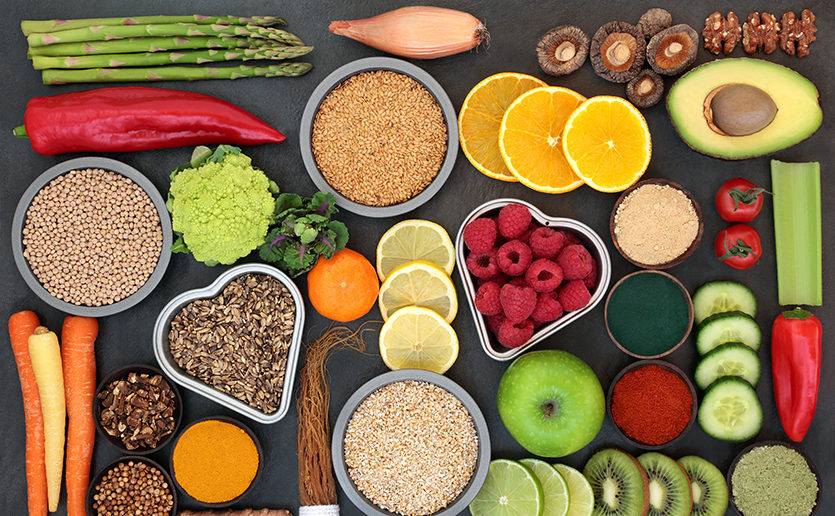
You can help your body do its job of naturally cleansing your system more efficiently.
.
.
How to Detox Through Diet | Mass General
Emily Gelsomin, MLA, RD, LDN A Mass General nutritionist offers tips to “detox” your body naturally and more efficiently.
.
.The detoxification process in our bodies happens naturally. Each
day, our system works hard to transform toxins into compounds that the
body can dispose of.
.
There is little evidence to support taking “cleansing” supplements or
severely restricting your intake to “detox.” Such practices can even be
harmful. However, there are certain things you can do to help your body
do its job of naturally cleansing your system more efficiently.
.
Good sources of fiber include beans, whole wheat and other whole grains (like oats), vegetables, fruits, nuts and seeds.
.
.
Detox with Diet
.“Smelly” foods: The sulfur in foods like garlic,
onions and cruciferous vegetables helps produce a natural chemical
detoxifier that is involved in regulating your body’s cleansing process.
.
Though cruciferous vegetables — like cabbage, cauliflower, broccoli,
Brussels sprouts, turnips and kohlrabi — may smell when cooked, they
contain powerful compounds called glucosinolates. Glucosinolates help
the liver eliminate toxins from your body. Other sources of
glucosinolates include radishes, watercress, mustard greens, kale and
horseradish.
.
Water: Being well hydrated aids urine and stool
removal, which also helps your system eliminate harmful compounds. While
very small amounts of toxins may be removed though sweat, sweating out
such compounds is more likely to be dehydrating than therapeutic. So be
sure to replenish fluid lost during exercise or in steamy conditions to
keep detoxifying organs, like your kidneys, working efficiently.
.
Fiber-rich foods: Fiber binds to toxins and carries
them out of the body through your stool. Having regular bowel movements
lessens the time that harmful compounds hang out in your intestinal
tract.
.
Good sources of fiber include beans, whole wheat and other whole
grains (like oats), vegetables, fruits, nuts and seeds. These foods can
also act as fuel for the healthy bacteria in your gut and may limit the
growth of disease-triggering microbes.
.
Broccoli, Brussels sprouts and cauliflower take very kindly to roasting. Simply toss them with olive oil, salt, and pepper and bake them at 425 degrees until they caramelize.
.
Pro- and Prebiotics: Probiotics are beneficial
bacteria found in fermented foods. They may reduce the presence of
harmful bacteria that can generate toxic byproducts in your intestines.
.
You can increase your intake of probiotics naturally by consuming
yogurt, kefir, cultured cottage cheese, miso, kimchi (Korean fermented
vegetables), or lacto-fermented sauerkraut (look for it in the
refrigerated section of the grocery store – the canned version usually
doesn’t have these supportive microbes). Having these foods once in a
while won’t cut it. To reap potential benefits you’ll need to eat them
regularly. Or better yet, aim for foods that naturally feed the
protective bacteria in your gut, as mentioned above. This includes items
like asparagus, onions, shallots, barley, and bananas. (Try this asparagus chickpea salad.)
.
.
Cooking Tips
.
Cruciferous vegetables: Think vegetables require a
lot of prep? Think again. Broccoli, Brussels sprouts and cauliflower
take very kindly to roasting. Simply toss them with olive oil, salt, and
pepper and bake them at 425 degrees until they caramelize (usually this
takes about 20 minutes). Cabbage and kale can be cooked down, so add
them to soups and stews. You can also substitute kale in many recipes
that call for spinach.
.
Onions: Think beyond the onion ring. Roasted onions — prepared like you would the vegetables above — can be served as a savory side dish. You can also sauté onions and use them as a base for pizza or as a sandwich topping.
“Hot” plants: Radishes, watercress and horseradish
add heat to foods without the spice burn. Slice radishes or toss some
watercress into a salad for a little “bite.” Horseradish can be added to
yogurt-based sauces or creamy dressings. Use the jarred, prepared
variety or look for the horseradish root itself. To use the root, simply
peel it like you would a carrot and grate it with a microplane or
cheese grater.
.
Miso: Miso, or fermented soybean paste, is often
found in red and white varieties. (White miso is milder.) It can be
mixed with an acid (like lime juice or vinegar) and a fat (like sesame
oil or olive oil) to make a dressing for cold noodles or salad greens.
(Here’s a recipe for sesame miso cucumber salad.)
.
Miso not your thing? Make a dressing using yogurt as the base instead. Here’s a horseradish yogurt cream recipe. (It works on more than just shellfish — try it with fish or chicken too).
.

.
.Emily Gelsomin, MLA, RD, LDN, is a senior clinical nutrition
specialist at Massachusetts General Hospital. As a registered dietitian,
she counsels on medical nutrition therapy on an outpatient basis and is
co-director of Be Fit, the hospital’s employee wellness program.
.
Jointly sponsored by The Clubs at Charles River Park and MGH Nutrition and Food Services,
the 10-week program focuses on helping participants “Be Fit and Eat
Right.” Every ten weeks, employees from different departments within the
hospital compete with each other as they make a commitment to Be Fit.
Through the creation of a social environment at the workplace,
participants are supported to make progress in personal lifestyle
changes with the help of a unique support system that includes a
dedicated nutritionist and personal trainer.
.
Be Fit strives to create a milieu of wellness that extends beyond the
10-week curriculum by offering features to those who are not part of
the intensive program. This includes the creation of Choose Well, Eat Well,
a rating system designed to help both employees and patients increase
awareness of healthy choices at retail eateries within the hospital. It
also includes a monthly e-mail with a timely nutrition tip.
.
No comments:
Post a Comment